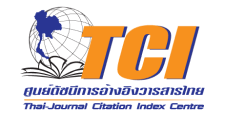Abstract
Introduction: In surgical pathology, staining specimens is the most effective method for evaluating margins and orientation. Although Tissue Marking Dyes (TMD) are the standard choice for staining specimens, their high cost is a significant drawback.
Objectives: This study aims to evaluate and compare the effectiveness of four TMD, India ink, and poster ink for inking specimens in terms of color shade and intensity, scored on a scale of 0 to 3 based on visibility, in addition to drying time, depth of penetration, interference with cellular and nuclear detail, and cost. The comparison will be made across four specimen types: benign fat, gastrointestinal (GI), pleura, and thyroid.
Methods: Forty-eight glass slides were prepared and evaluated by three pathologists and three pathology residents. The results were analyzed using kappa and paired T-test.
Results: Poster ink was the most cost-effective option. There were no significant differences in drying time and depth of penetration among the inks. Yellow poster ink should be avoided due to its change into black pigments after processing. Blue India ink might be confused with green. Instead of TMD, black poster ink was the preferred choice for fat (intensity of TMD and poster ink: 2.17 and 3; p-value 0.0041), GI (intensity of TMD and poster ink: 2.33 and 3; p-value 0.0041), and thyroid (intensity of TMD and poster ink: 3 and 2.83; p-value 0.3632), while green India ink was the preferred choice for pleura (intensity of TMD and India ink: 2.83 and 2.5; p-value 0.1747).
Conclusions: India ink and various colors of poster inks can serve as alternatives to TMD for staining specimens, except for pleural tissue, in which only green India ink can effectively substitute TMD.
References
Bundred JR, Michael S, Stuart B, et al. Margin status and survival outcomes after breast cancer conservation surgery: prospectively registered systematic review and metaanalysis. BMJ. 2022;378:e070346. doi: https://doi.org/10.1136/bmj-2022-070346.
Pursnani D, Arora S, Katyayani P, Ambica C, Yelikar BR. Inking in surgical pathology: does the method matter? a procedural analysis of a spectrum of colours. Turk Patoloji Derg. 2016;32(2):122-8. doi: https://doi.org/10.5146/tjpath.2015.01351.
Aziz MA, Bakar NS, Kornain N. Poster colours: Pocket-friendly alternative to tissue marking dyes. Turk Patoloji Derg. 2019;35(2):170-1. doi: https://doi.org/10.5146/tjpath.2017.01394.
Kizhakkoottu S, Jayaraj G, Sherlin HJ, Don KR, Santhanam A. Inking of gross specimens: a systematic review. Arkhiv patologii. 2021;83(1):49. doi: https://doi.org/10.17116/patol20218301149.
Kosemehmetoglu K, Guner G, Ates D. Indian ink vs tissue marking dye: a quantitative comparison of two widely used macroscopical staining tool. Virchows Archiv. 2010;457(1):21-5. doi: https://doi.org/10.1007/s00428-010-0941-5.
Sarwar A, Ashok P, Usman A, Moeed K. Comparative Benefits of Tissue Marking by Poster Ink in Histopathology. Journal of Islamabad Medical & Dental College. 2022;11(3):175-81. doi: https://doi.org/10.35787/jimdc.v11i3.751.
Biga LM, Dawson S, Harwell A, et al. 4.1 types of tissues. Oregonstate.education. Published 2019. https://open.oregonstate.education/aandp/chapter/4-1-types-oftissues/.
Recommended Citation
Chumponpanich, Natnalin; Pisutpunya, Adiluck; Yawatta, Manoch; Atiroj, Nawaluk; Phairintr, Putch; Poungmeechai, Natcha; Stithsuksanoh, Chatdhee; and Kaewnopparat, Worakit.
2025
Efficacy and Cost-Effectiveness of Tissue Dyes: Comparison of Commercial Tissue Marking Dye, India Ink, and Poster Ink in the Evaluation of Resection Margins Across Various Types of Pathological Specimens.
Asian Medical Journal and Alternative Medicine. 25,
1 (Apr. 2025 ), 12-18.
Available at: https://doi.org/10.70933/2773-9465.1003



